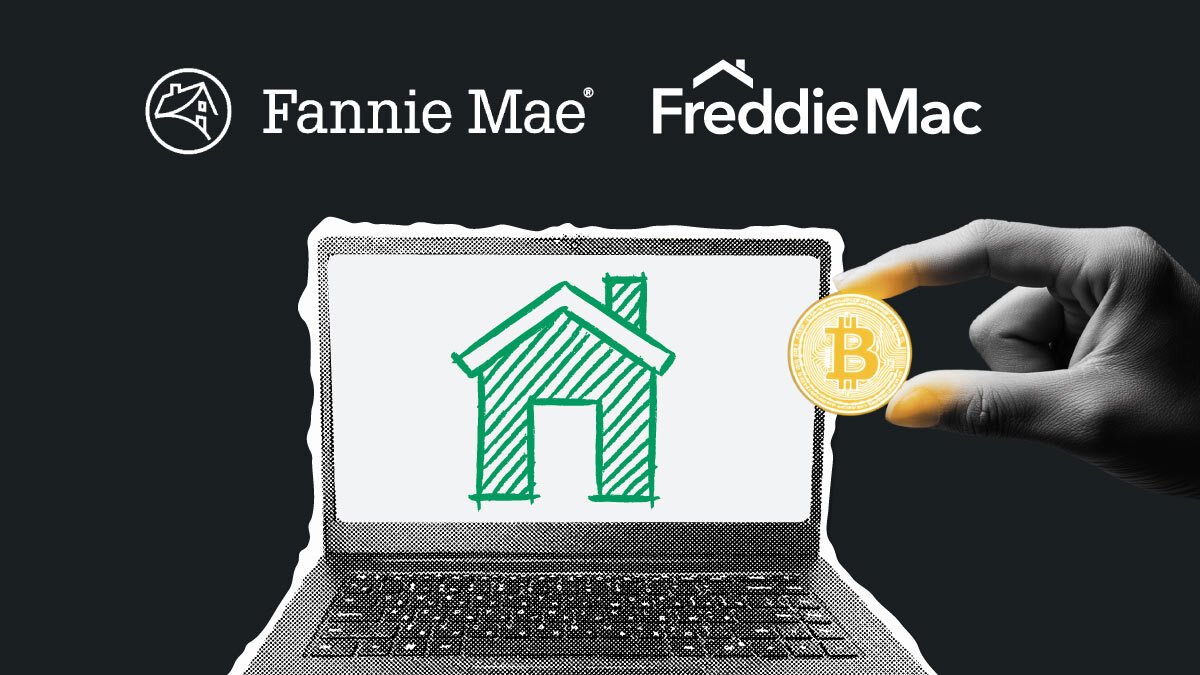Phil Crescenzo, the Southeast division vice president for Nation One Mortgage Corp., says that the new directive is “too narrow” to impact homebuyers since it’s only targeting conventional loans via the government-sponsored enterprises (GSEs).
“If a borrower already has stocks or retirement accounts, an underwriter may not even factor in the crypto,” Crescenzo said.
Alternative liquidity
But others see a long-term opportunity. Emily Goodman, a partner at FS Vector, a consulting firm for financial services clients, says that digital assets are already expanding access to homeownership for some.
“Folks who hold crypto assets will introduce new people into the system to go through the mortgage qualification process that might not have otherwise been able to … so it’s just the idea that they can get liquidity and there’s a value attributed to that that’s really a game changer,” Goodman said.
Crescenzo acknowledged the directive could help “create conversations” that bring crypto-savvy homebuyers off the sidelines.
“You’re talking to a certain class of people who probably are going to qualify without [crypto] and not even need it,” he said. “But thinking that they could, it might bring those buyers closer to making a decision or purchase if they’re holding those assets, which could be a positive spin.”
Roby Robertson, executive vice president of LoanLogics, a mortgage document automation provider, is more optimistic about how the new era of crypto-backed lending could open doors for nonqualified mortgage (non-QM) borrowers.
“I think there are a lot of first-time homebuyers that have ventured off into this space. They’ve made some good money and they, just like nonqualified borrowers in general, are having a hard time getting access to capital through traditional means,” Robertson explained.
The elephant in the room, Robertson says, is where the funds come from. He says that a crypto borrower’s “ledger,” referring to their record of activity, will play into the risk associated with their loan.
“I think what you see in this country is a lot of people making a lot of money through nontraditional ways,” he said. “They’re an influencer or they’re an Uber driver, and they make money consistently, but they just don’t make it traditionally, and that’s a segment we can’t ignore.”
Pricing in risk
Robertson believes crypto could actually make mortgage lending safer if lenders can track the assets.
“In some ways, being able to tether a mortgage contract to an active crypto account tells you a lot about what’s going on with that person,” he said.
“I think, in many ways, it could be safer if you were able to create the agreement between me and that mortgage lender, and essentially guarantee my crypto as part of that exchange. … Then you can monitor it, understand if it drops in value, and you can call my loan in and make that activity much more relevant, rather than approving someone with assets in their account today. Because we really don’t know what happens to those assets six months from now or a year from now.”
Robertson compares this model to commercial banking, where lenders account for asset value swings with thresholds that require borrowers to post additional collateral.
“I think in practical terms, they would create some sort of minimum threshold if it drops in a certain percentage of value, then there’s either an influx of assets that have to be produced or are paid down to counteract the value, or just to pay off principal,” he said.
While crypto carriers tend to be younger, wealthier and financially literate borrowers, Crescenzo expects a cautious approach from the GSEs.
“I think you might see a more conservative approach on the valuation. Maybe the guidelines will come out and say, ‘We need to see the assets over a certain period of time, and we’re going to give you 50% of that valuation for market fluctuation.’ I can’t see that being a reliable income stream,” he said.
The gray areas
Goodman pointed to legal uncertainty around digital assets as secure collateral. While half of U.S. states have adopted Uniform Commercial Code (UCC) Article 12, which governs digital asset transactions, others haven’t, leaving gaps in lender protections during defaults or bankruptcies.
“We still need the other states to do it, because there’s some uncertainty around having access to a digital asset,” she explained. “When a lender takes collateral, they want to ensure they have what’s called a perfected security interest in that asset. That means their claim is enforceable against the borrower, and they also get to beat out other creditors in the event of a bankruptcy or default.”
Another open question is how crypto-backed lending fits within state licensing laws, especially when U.S. dollars are not involved.
“If a lender holds Bitcoin as collateral and deals only in stablecoins, are they subject to lending license rules?” Goodman said. “And how should states require that crypto collateral be held? Those are still unresolved.”




